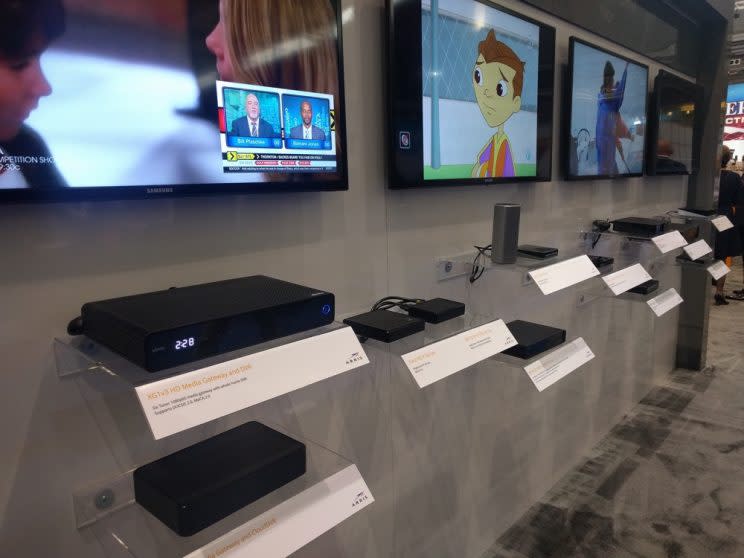Big Cable broke its promise and you're paying for it

Last June, Big Cable made an appealing offer for viewers and regulators. Companies would provide consumers with free apps to watch TV rather than making them pay monthly fees for cable boxes. But the cable companies didn’t do this out of the kindness of their hearts — they wanted to stop the Federal Communication Commission from passing regulations making them ship apps.
A year after that “Ditch the Box” pledge, two things have changed. There’s now zero threat of federal regulators requiring cable operators to give subscribers free apps to replace rented boxes, and the industry’s “Ditch the Box” plan seems to have disappeared.
What was on the table
Twelve months ago, cable operators had reason to fear that the FCC would crack open the box market.
Those rectangular devices that sit under your TV set compound your cable bill — typically $10 a month for a tuner or $20 a month for a digital video recorder. But that extra fee often buys you a clunky, low-resolution onscreen interface that can’t show more than few channels worth of program listings.
As President Obama told Yahoo Finance in an interview last April: “There hasn’t been much innovation.”
The FCC’s original “Unlock the Box” proposal would have compelled cable and satellite operators to provide some standard framework upon which outside manufacturers and developers could ship their own hardware and software to receive and record a pay-TV feed.
Ditch The Box, as advocated by a cable-led group called the Future of Television Coalition, would have liberated cable and satellite subscribers from many of those those hardware fees by letting them use free, web-based viewing apps on connected TVs and streaming-media players.
The deal did not cover digital video recorders, and satellite viewers would still need one rented box to get the signal from space and then distribute it through the home.
But it would have happened fast, as an outline of the plan touted: “Providers will have two years to fully implement the new requirements – and many are already racing to do so sooner.”
Where we are now
FCC chair Tom Wheeler adopted some parts of Ditch the Box in a revised proposal that would only have compelled pay-TV providers to ship their own, recording-capable apps, with no need for them to accept third-party boxes. The FCC continued deliberating the matter without a vote — and then Donald Trump won the presidential election.
As part of his administration’s effort to hit the “Undo” button on the Obama administration’s accomplishments, new FCC chair Ajit Pai promptly dropped the Unlock the Box proposal from further consideration.
But what about the companies that had lined up behind Ditch the Box concept?
One, Comcast (CMCSA), did ship a free app for Roku media players and Roku-enabled TVs. Thanks to Comcast’s Kafka-esque pricing, it will save you all of $2.50 a month per TV. But at least you won’t have an extra remote on your coffee table!
Comcast didn’t say how many subscribers had signed up for this, or when it might ship an equivalent app for other platforms. But at least it’s trying.
AT&T (T), the other TV giant to endorse Ditch the Box before the FCC, has done much less. Its U-verse and DirecTV apps don’t let you stream to your TV via Google’s (GOOG, GOOGL) Chromecast or Apple’s (AAPL) Airplay, so you still need a traditional cable box.
That’s the case with most other pay-TV providers, including Yahoo Finance’s parent company Verizon (VZ).
The Future of TV Coalition has gone silent — it last tweeted Nov. 28 — the cable industry’s trade group NCTA hasn’t had much to say about it either.
NCTA spokesman Brian Dietz wrote in an e-mail that Ditch the Box was pitched as “an “alternative” to the Wheeler’s original proposal. Without the FCC’s acceptance of Ditch the Box, that plan got ditched.
BTIG analyst Richard Greenfield offered a shorter explanation in an e-mail: “They make far too much money on boxes.”
Cord-cutting will continue
Cable subscribers, however, have their own votes to cast, and ever more of them have been voting against any kind of traditional pay-TV bundle.
Research firm MoffettNathanson estimated that traditional TV providers lost 762,000 subscribers in the first quarter, and UBS predicts that more than a million others could flee in the second quarter.
But the cheaper streaming video services that many consumers have signed up as an alternative to traditional cable, like Hulu with Live TV and YouTube TV, require their own compromises. Some services leave out channels viewers may value.
That’s especially problematic if you want to watch live sports and your team is not among those enlightened enough to shut up and take cord-cutters’ money. And if you want a high-speed connection, you may still be forced to continue buying internet access from the company you just fired from TV duties, since in many markets only the local cable company provides acceptable download speeds.
And their picture quality may suffer from the occasional hiccup — especially if Pai’s move to end net-neutrality rules gives your internet provider cover to degrade the delivery of some services.
Still, for all of their problems, these services won’t make you feel like a chump for paying $10 a month to use some crummy box.
More from Rob:
Why America should import France’s plan to become ‘the nation of startups’
CES Asia shows where consumer tech is heading in one of its dominant markets
The big issues we want Apple to address in macOS High Sierra
Email Rob at rob@robpegoraro.com; follow him on Twitter at @robpegoraro.

 Yahoo Finance
Yahoo Finance 
